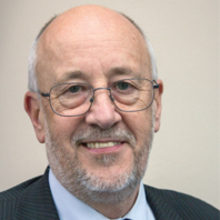From the President
Issue: Soil
07 May 2015 article

2015 is the International Year of Soils, which provides the focus for this edition of Microbiology Today. Those of us who have worked on soil micro-organisms know what a complex and fascinating ecosystem they inhabit. Not only is soil microbiology of great academic interest, the micro-organisms are of crucial importance in determining the characteristics of the soil.
Soil health and nutrient cycling was one of the nine research themes emphasised as important to feeding the planet in the Society’s 2012 Position Statement on Food Security and Safety. In the same year the Society won a Silver Gilt Medal at the Chelsea Flower Show for our display on the role of micro-organisms in the health of soils and of crops entitled Can Microbes Feed the World?
Not only are soil micro-organisms of interest in maintaining a healthy soil and ensuring good productivity from land, they are important in many other areas. One of the more bizarre hypotheses I have come across is that the African veldt is so flat because of the action of micro-organisms, as opposed to the physical erosion, in leaching soils and thereby causing the soil to settle in a uniform fashion. As far as I am aware, any evidence for this entertaining hypothesis is totally lacking. However, the actions of micro-organisms on the mineral composition of soils are important and are of interest to the Geomicrobiology Network, a group supported by the Society in association with the Mineralogical Society, which brings together researchers from a variety of disciplines with an interest in the role of micro-organisms in geological processes. The Network will hold its next meeting on 24 June at the University of Leeds.
Another high-profile role of soil micro-organisms is in the production of antibiotics. Streptomycetes produce about two-thirds of the known natural antibiotics, for example. Given the concerns about the prospective increase in antibiotic resistance, with the prediction of an extra 10 million deaths by 2050 unless new antibiotics become available, I am delighted that the Society is proceeding with the Small World Initiative. This citizen science project will engage schoolchildren and the public in the search for antibiotic-producing micro-organisms in soil samples and will, we hope, allow new classes of antimicrobials to be discovered and developed for clinical and veterinary use. Further details of the Initiative are given in this edition.
Antimicrobial resistance was one of the sessions at our Annual Conference in Birmingham and this focus helps pull together the research and future opportunities in this area. This was again a highly successful conference. The Annual Conference is an opportunity to bring together microbiologists across the breadth of our discipline and across the range of experience from PhD students to senior industrial practitioners and geriatric professors (among whom I include myself). Our 2016 Conference returns to Liverpool and we already have a variety of excellent proposals for sessions at that meeting. It is never too soon to think about sessions for the 2017 Conference in Edinburgh; the deadline for proposals is 14 December 2015.
The Society continues to develop and expand its reach to our scientific community. The Annual Conference saw the launch of our new journal, Microbial Genomics, which complements our existing publications. I encourage colleagues to use the Society’s journals for their publications. Our future as a learned society, our support of early-career researchers, our public engagement activities and our ability to influence opinion-formers all depend heavily on our journal income.
We are a membership organisation. As always, if you have suggestions for how the Society could better serve you, I am pleased to receive these by email.
NIGEL BROWN
President
[email protected]
